 |
 |
 |
| |
Combining Illicit Drugs Tied to Risky Sex in Mexican MSM
|
| |
| |
AIDS 2022, July 29-August 2, Montreal
Mark Mascolini
Compared with no substance use, combinations of illicit drugs significantly boosted chances of condomless sex, exchanging sex for drugs or money, having anonymous sex, having group sex, or having a sexually transmitted infection (STI) diagnosis in the past 12 months in a study of 15,242 Mexican men who have sex with men (MSM) [1]. Compared with HIV-negative MSM, those with HIV ran a significantly higher risk of the same sex behaviors.
Substance use continues to rise in Mexico. According to the 2019 Federal Report on Drug Consumption in Mexico, from 2002 through 2016, Mexico saw a 7.8% jump in number of men who ever used an illegal substance and a 2.7% climb in men using an illegal substance in the past year. But this federal report does not consider the impact of illicit drug use on sex behaviors in Mexico. An 800-person online survey conducted in 2015 found that 46% of respondents had consumed a drug other than alcohol in the past year. Among men who used drugs other than alcohol in the past 12 months, more than 70% used marijuana, more than 40% used poppers (alkyl nitrites), and more than 20% used either cocaine or MDMA (Ecstasy).
University of California, San Diego (UCSD) researchers and collaborators from other centers noted that prior research on how substance use affects sex in MSM focused on one substance at a time. New methods like latent class analysis allow investigators to gauge the impact of multiple substances. This method has been used in MSM [2], but not in Mexican MSM.
The Es Entre Hombres Study aimed to analyze the interplay between multiple illicit drug classes in (for the first time) a nationwide sample of MSM substance users. Participants had to be cisgender men at least 18 years old who had anal or oral sex with another man. They had to be a resident of Mexico. The investigators recruited participants from three social networking applications: Grindr, facebook, and Hornet.
The analysis considered both lifetime use of injected drugs and noninjected drugs used in the past 12 months. Sex behaviors considered were condomless anal intercourse, exchanging sex for drugs or money, anonymous sex, group sex, and an STI diagnosis at any time in the past 12 months. Using the adjusted latent class analysis procedure developed by Card and colleagues [2], the researchers considered only substances used by more than 30 men.
Among the 15,242 men recruited, 40% were 18 to 24 years old, 26% were 25 to 29, 25% were 30 to 39, and 10% were 40 or older. About half of the men, 52%, had a bachelor’s degree, 35% had a high school or technical degree, and 13% had postgraduate education. A large majority, 94%, had internet access every day, and 73% had internet access in their home.
Slightly more than one quarter of study participants, 28.3%, reported noninjection drug use in the past 12 months, while 1.1% reported injecting drugs at some time in their life. The most-used noninjection drugs were marijuana (24%), poppers (12.2%), cocaine (6.9%), and MDMA (5.5%). Among all participants (substance users and nonusers), 15.1% used only marijuana, 4.3% used marijuana and poppers, 4.2% used marijuana and club drugs, and 1.0% had elevated polydrug use.
In an analysis adjusted for age, education level, sexual identity, HIV status, and region, compared with participants who used no illicit drugs, men who used only marijuana had significantly greater adjusted prevalence ratios (aPR) for condomless anal sex (aPR 1.14), exchanging sex for drugs or money (aPR 1.37), anonymous sex (aPR 1.22), group sex (aPR 1.50), and an STI diagnosis in the past 12 months (aPR 1.24, P = 0.002; all other preceding and following P < 0.001). For men who used marijuana and poppers, respective aPRs were even higher: 1.35, 2.92, 1.84, 2.85, and 1.96. For men using both marijuana and club drugs, respective aPRs were 1.24, 3.00, 1.53, 1.68, and 1.76. And for men with elevated polydrug use, respective aPRs were 1.39, 4.99, 2.01, 3.28, and 2.20.
In an analysis adjusted for substance use class, age, education, and sexual identity, compared with HIV-negative MSM, those with HIV were significantly more likely to exchange sex for drugs or money (aPR 1.18, P = 0.016), to have anonymous sex (aPR 1.26, P < 0.001), to have group sex (aPR 1.37, P < 0.001), and to have an STI in the past year (aPR 2.62, P < 0.001).
The researchers noted that recent research linked methamphetamine use or popper use to sexual risk behaviors in Mexican MSM. But their study is the first to tie combinations of illicit drugs to risky sex.
References
1. Algarin A, Lara MV, Hernandez-Avila M, et al. Characterizing substance use typologies and their association with sexual risk behaviors: a latent class analysis among men who have sex with men in Mexico. AIDS 2022, July 29-August 2, Montreal. Abstract OAD0304.
2. Card KG, Armstrong HL, Carter A, et al. A latent class analysis of substance use and culture among gay, bisexual and other men who have sex with men. Cult Health Sex. 2018;20:1424-1439. doi: 10.1080/13691058.2018.1439186. https://www.tandfonline.com/doi/abs/10.1080/13691058.2018.1439186?journalCode=tchs20
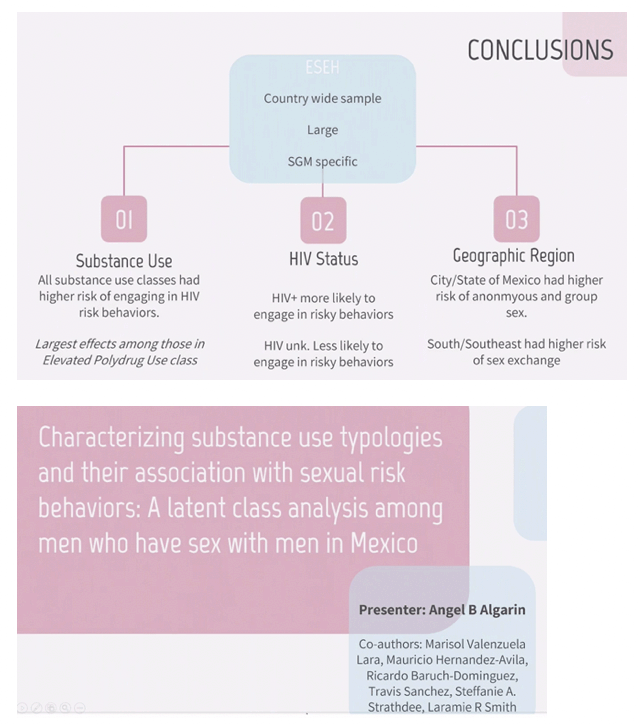
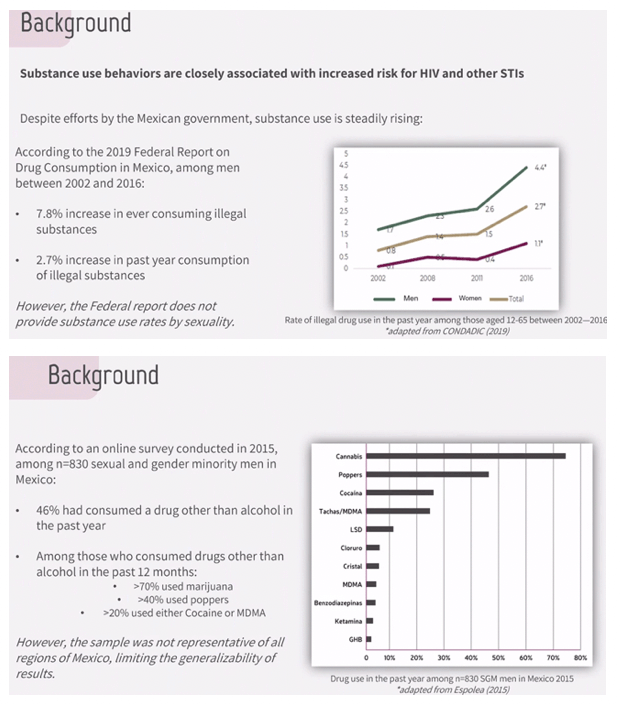
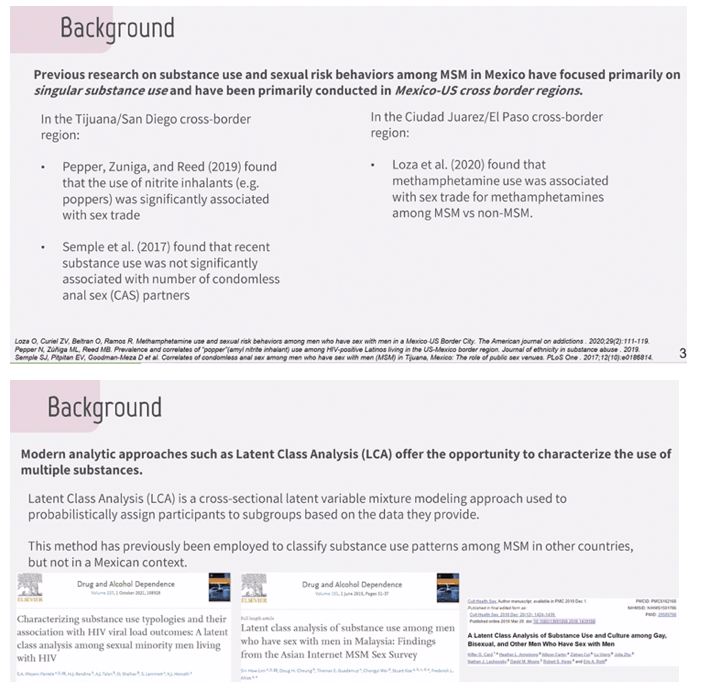
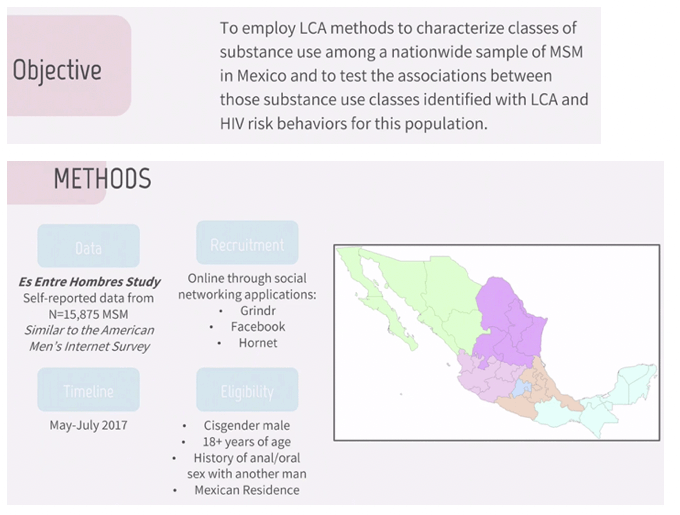
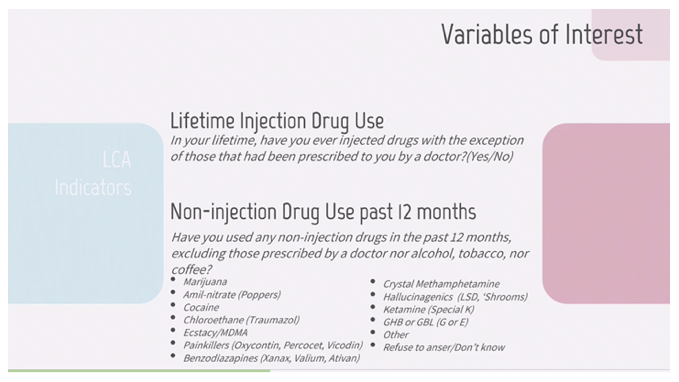
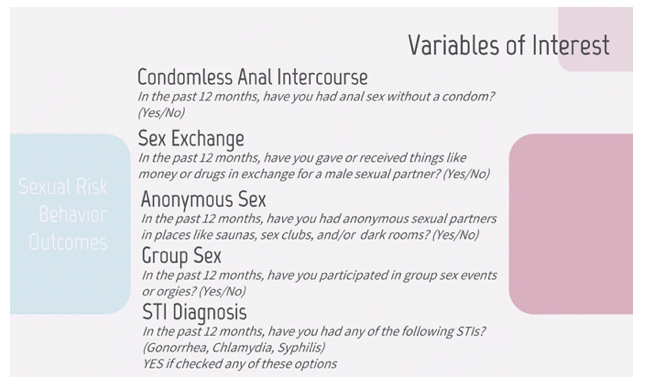
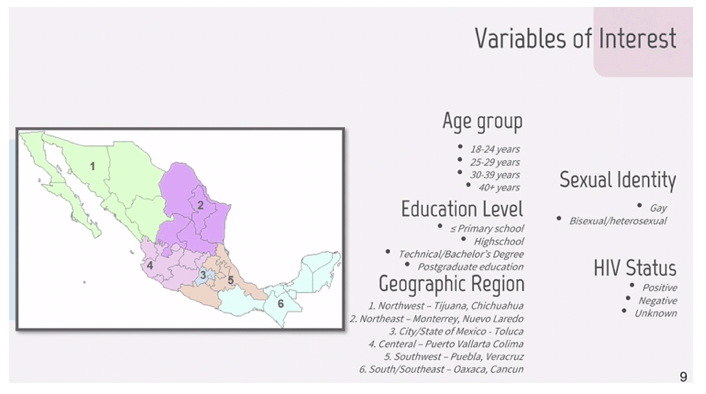
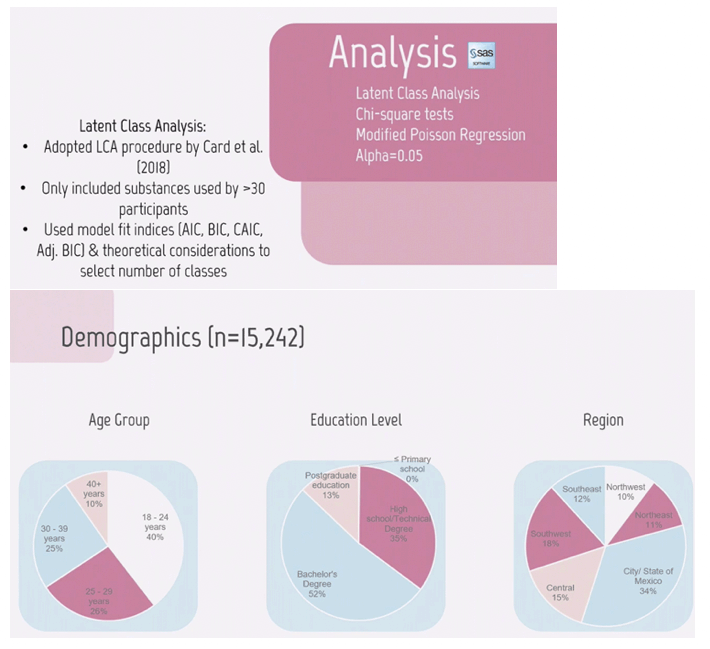
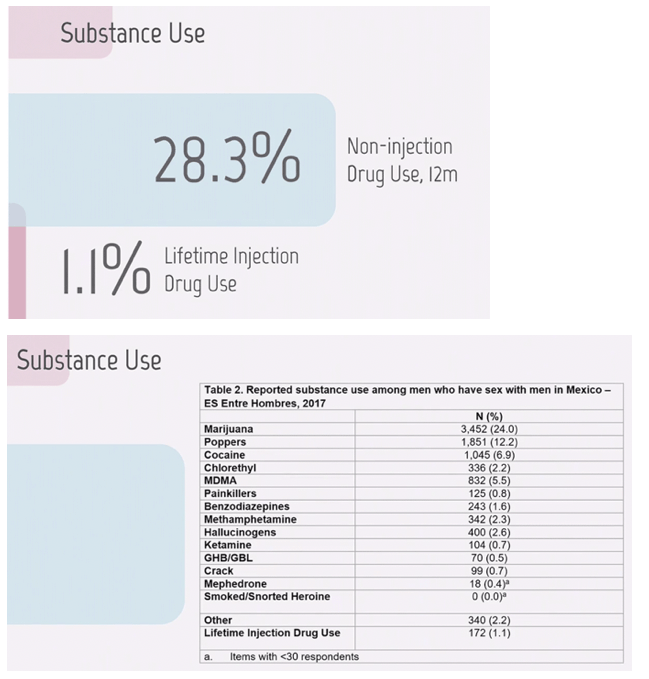
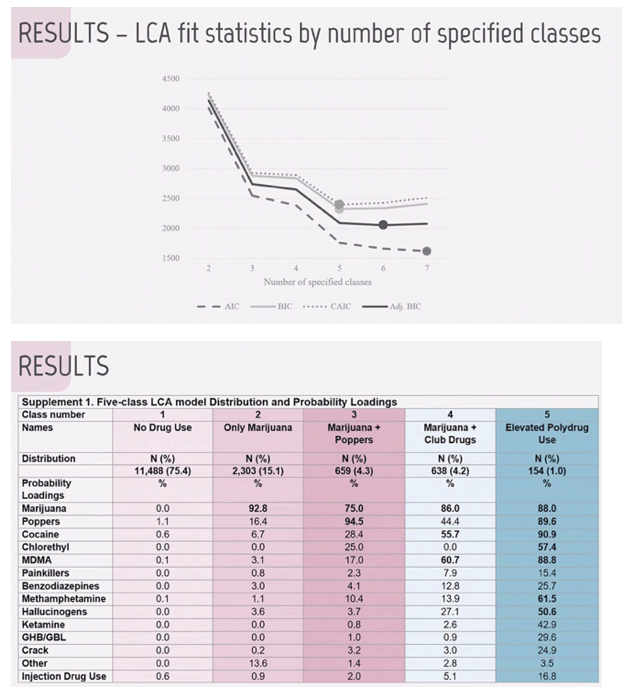
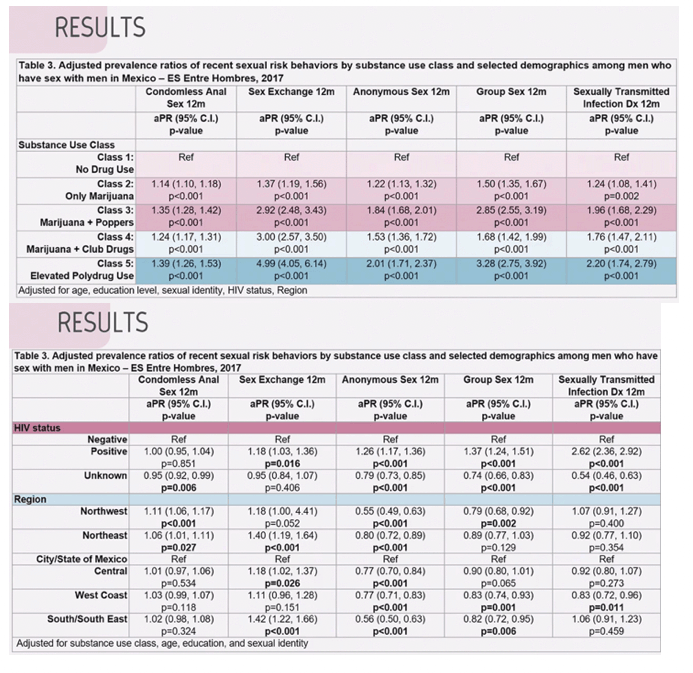
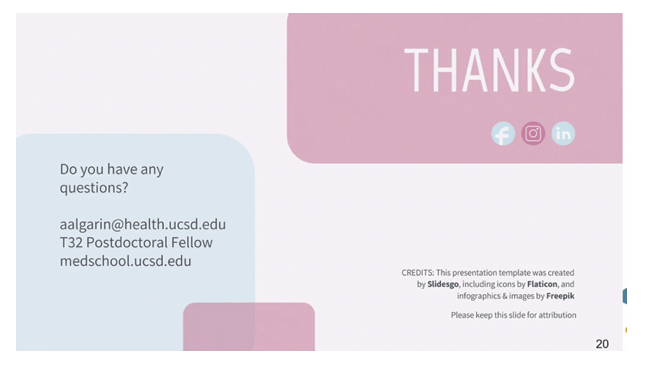
|
| |
|
 |
 |
|
|